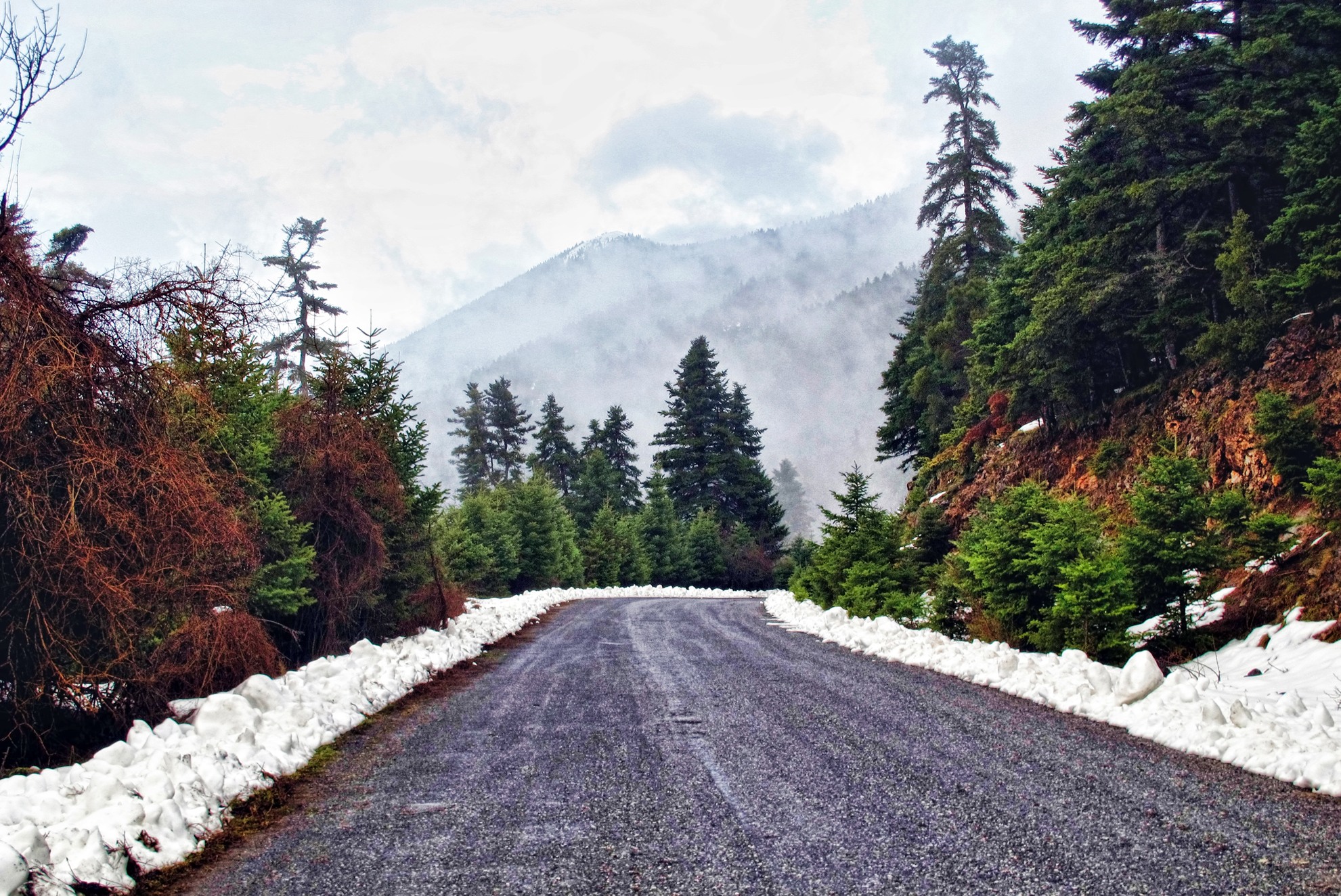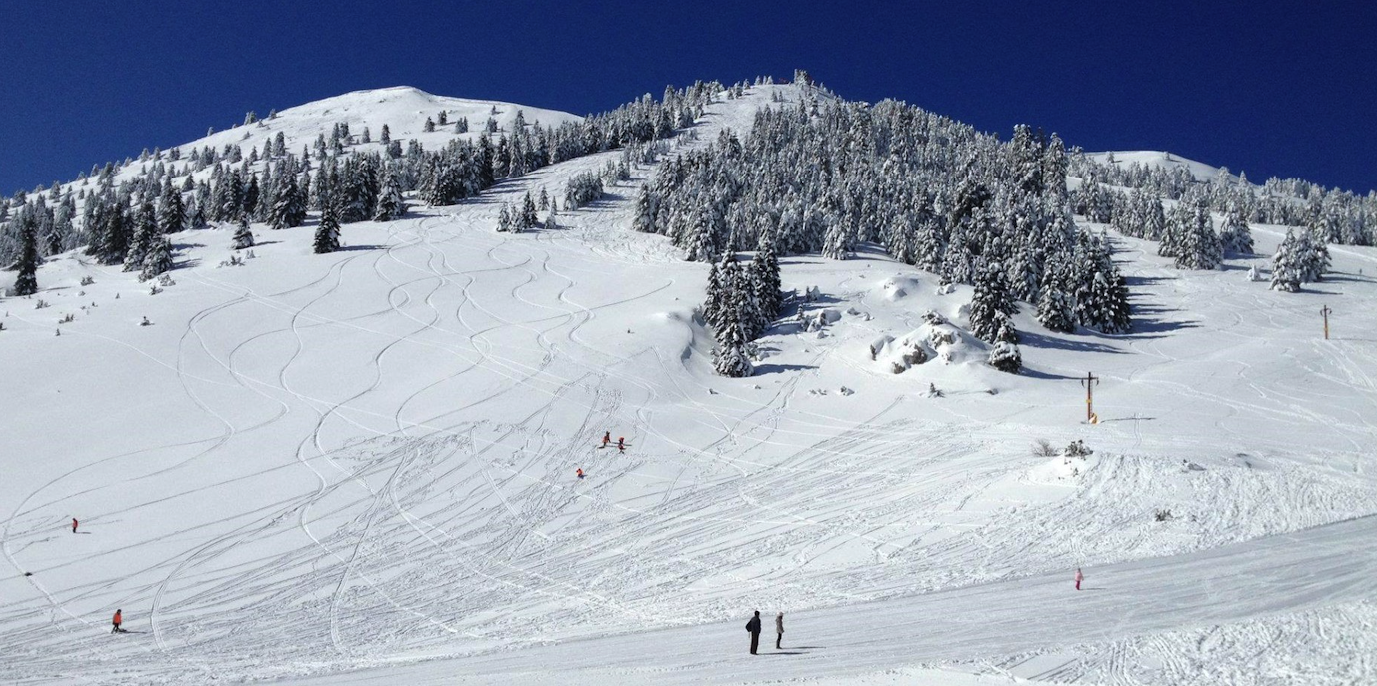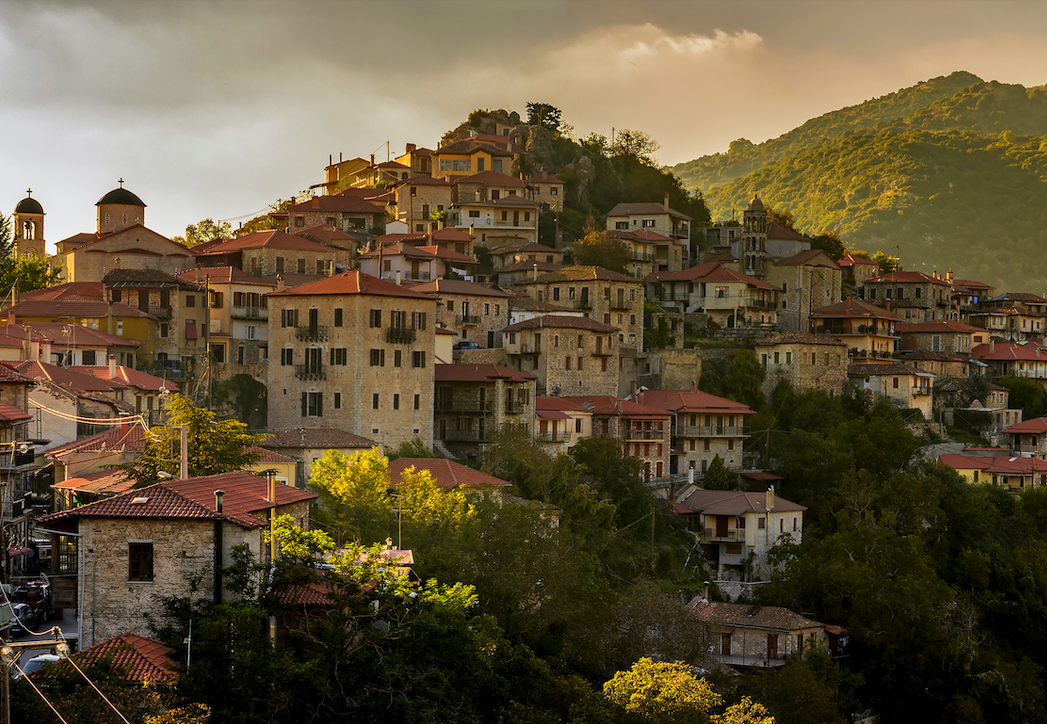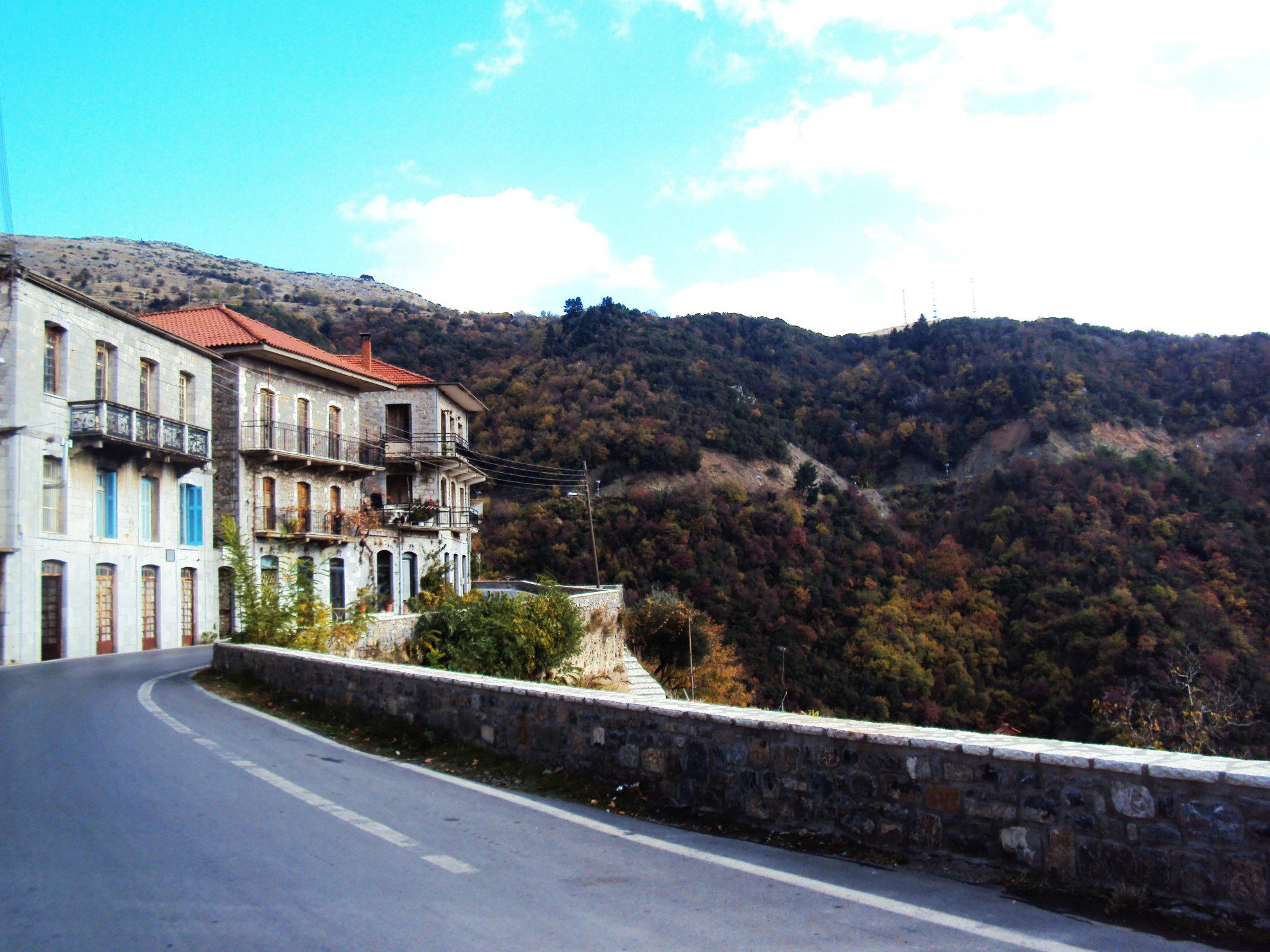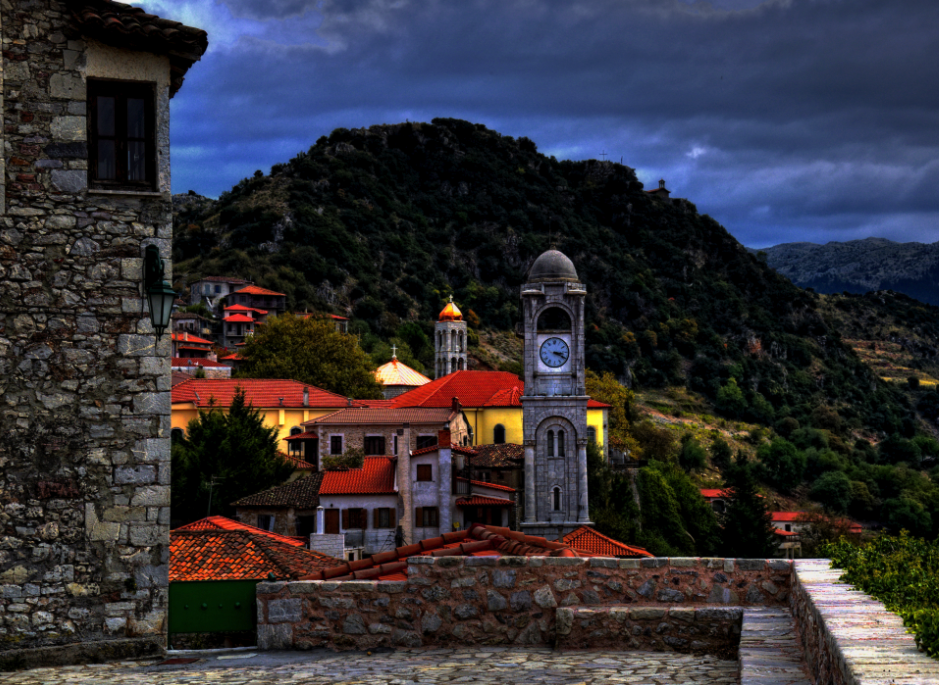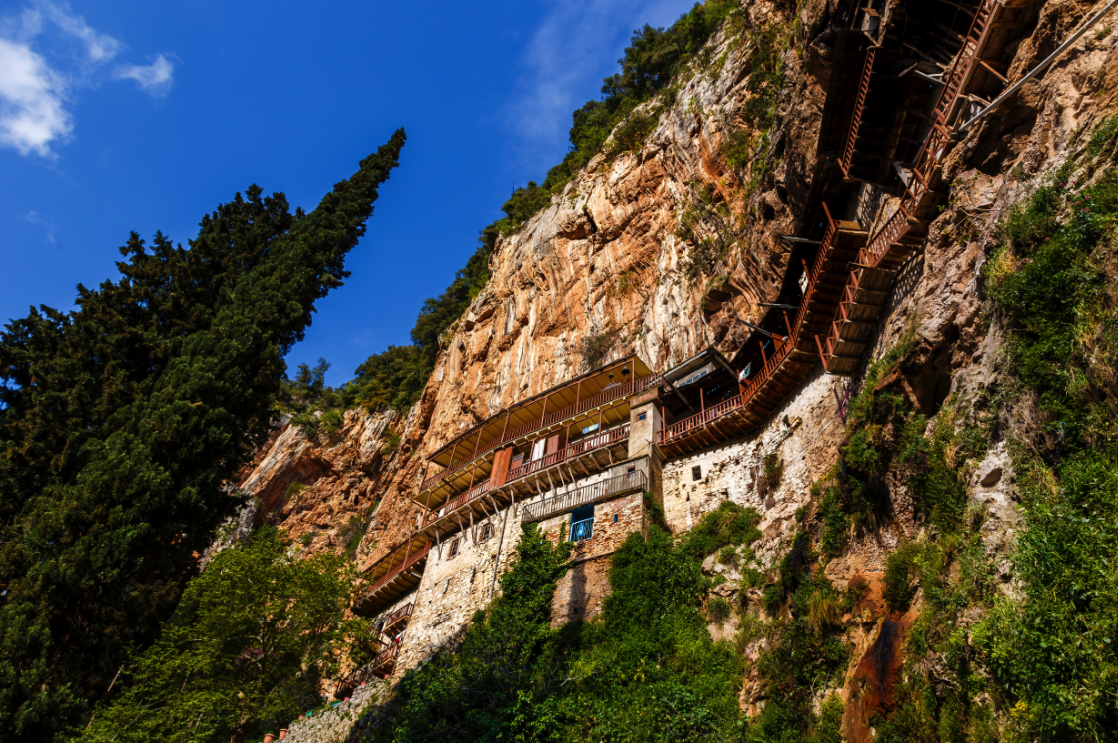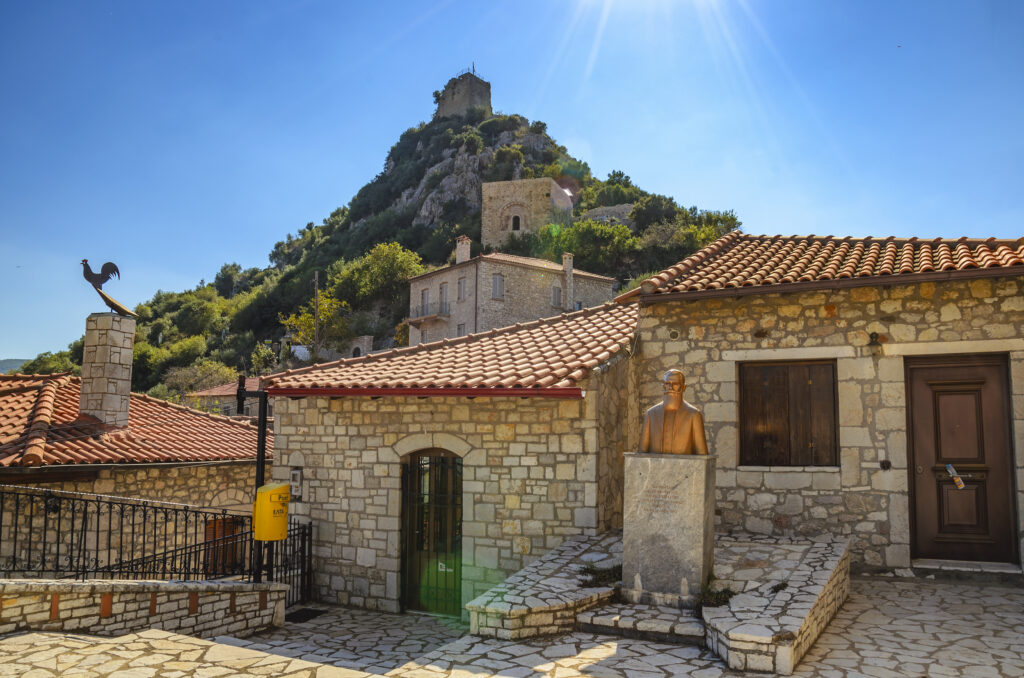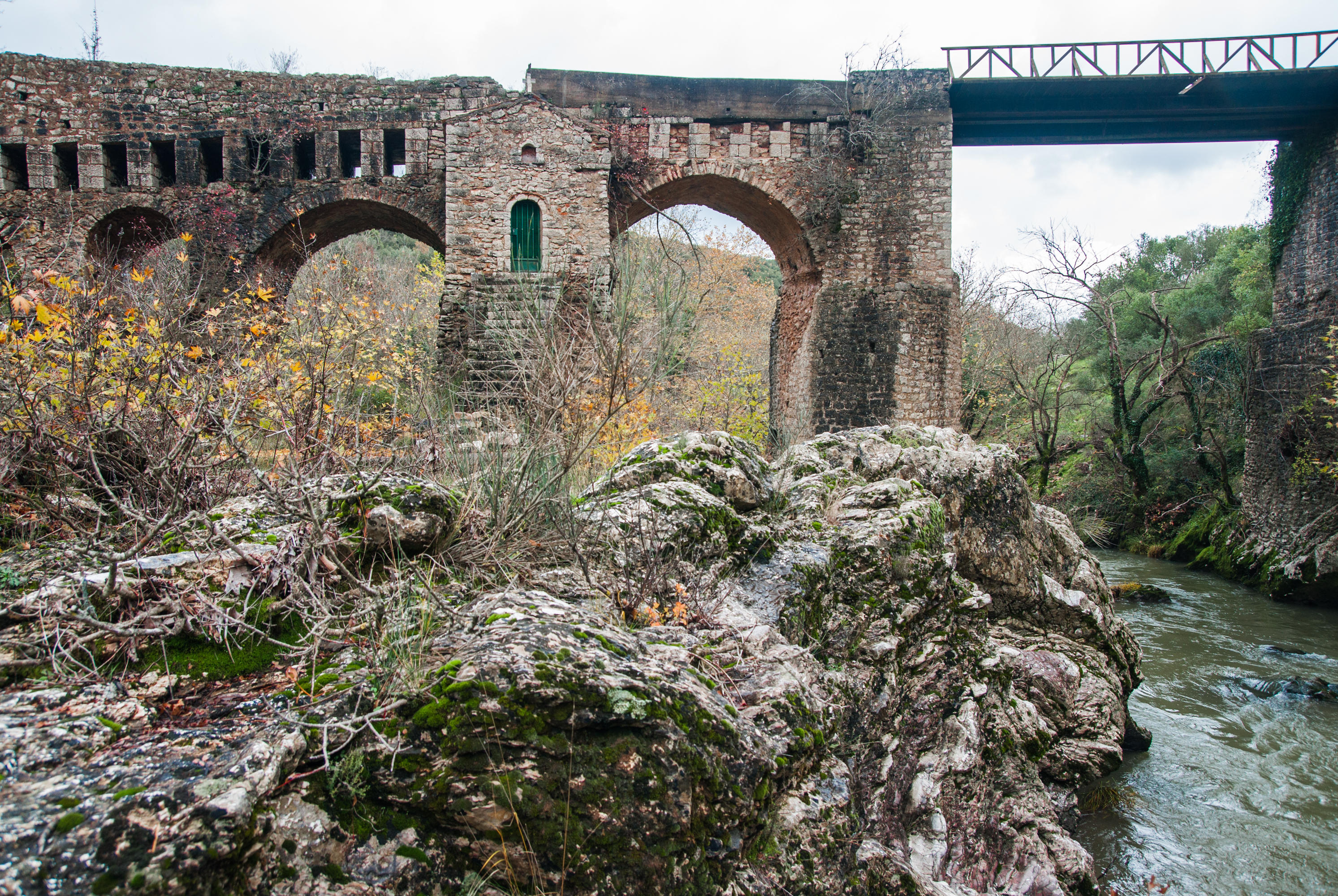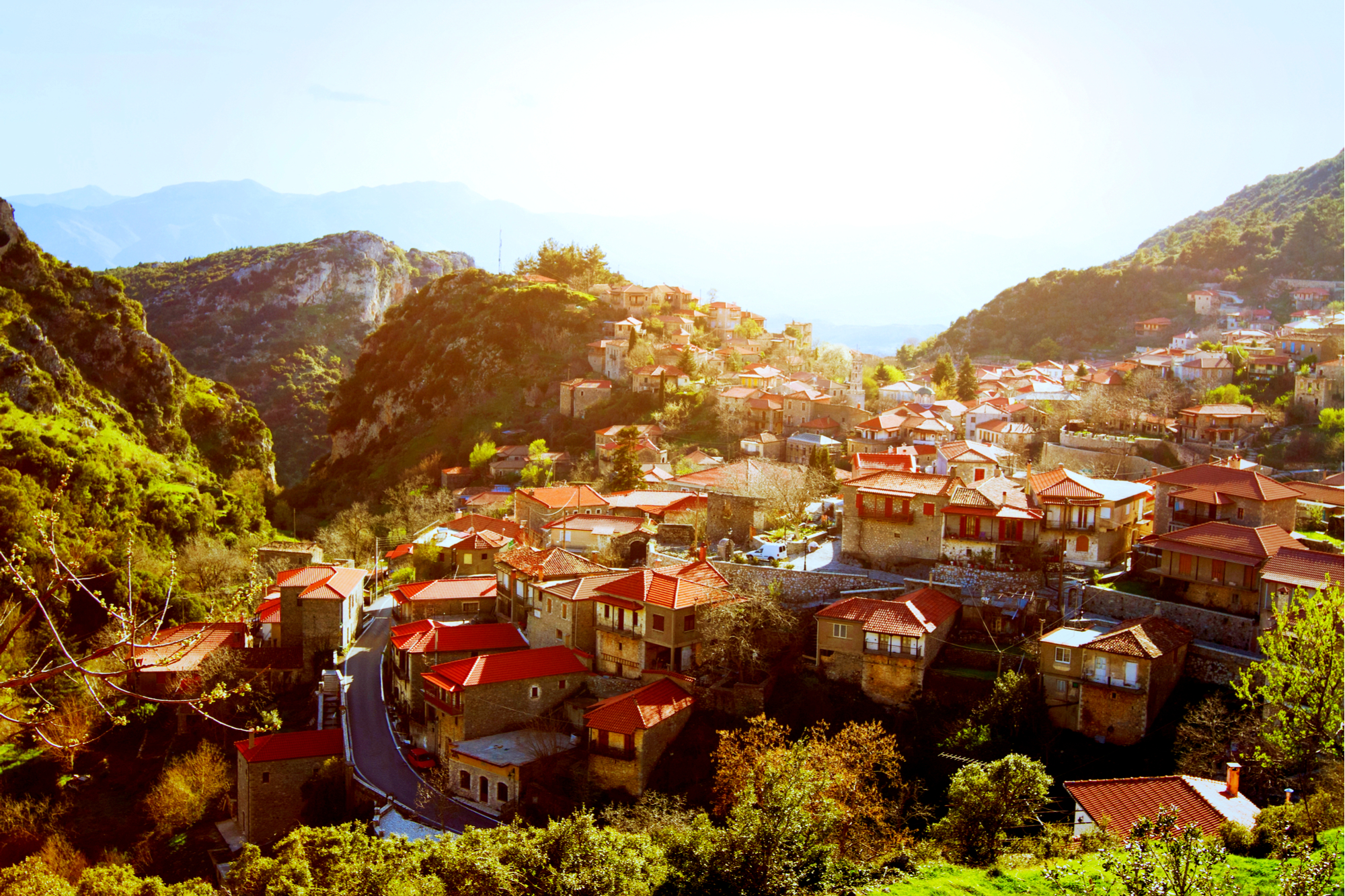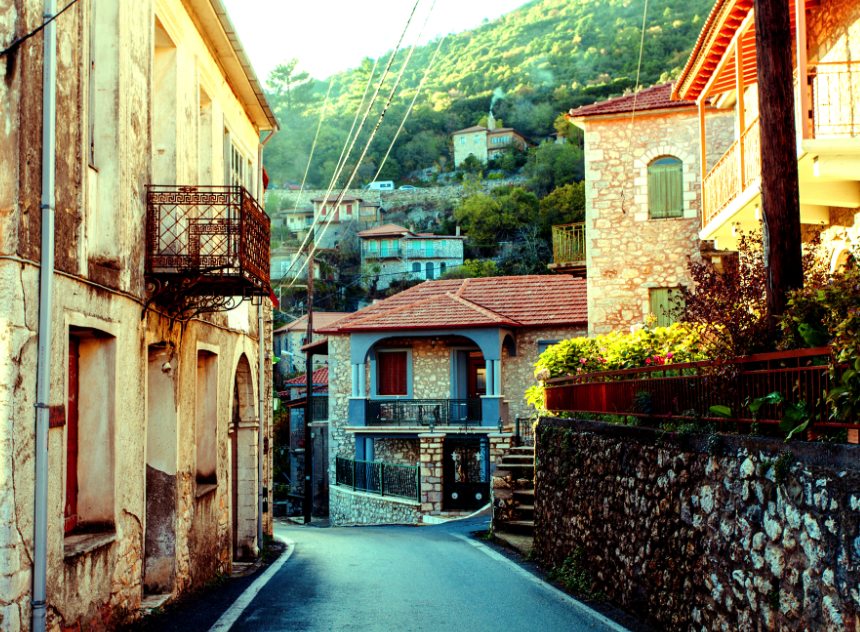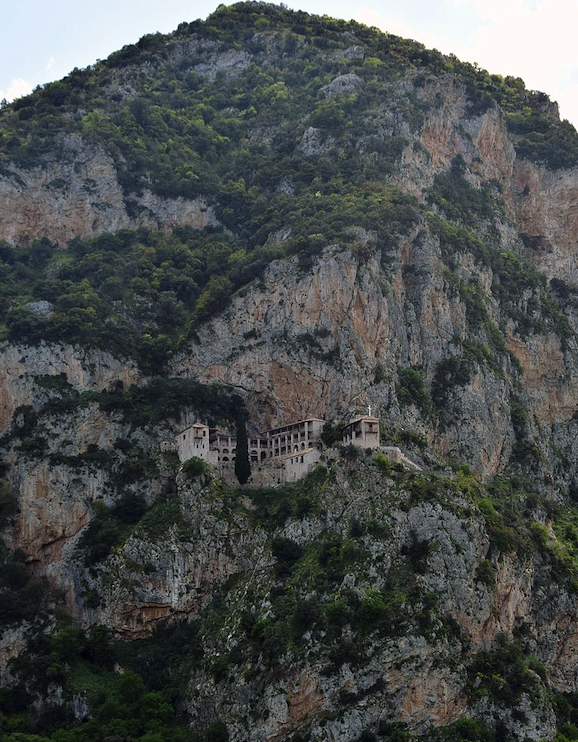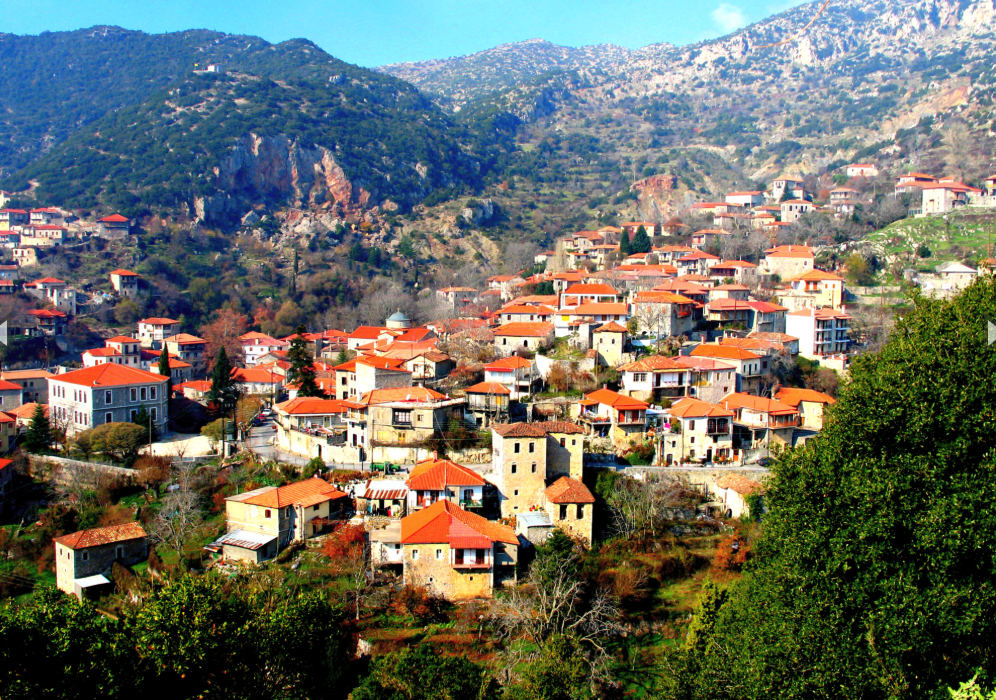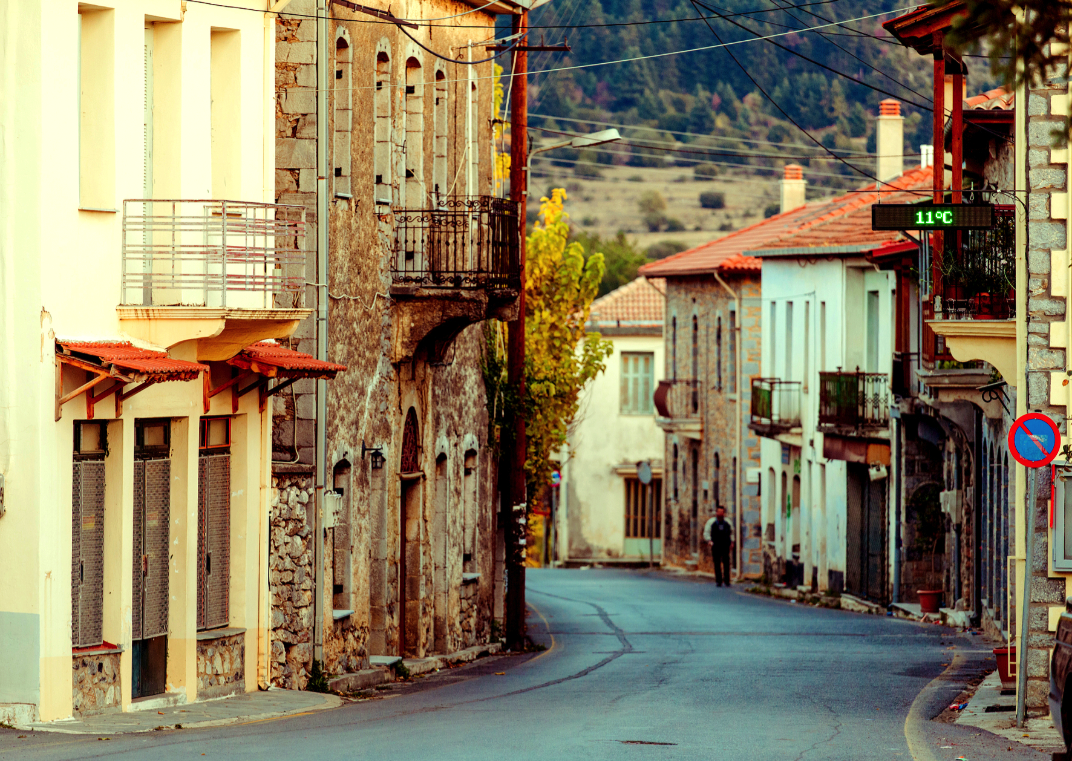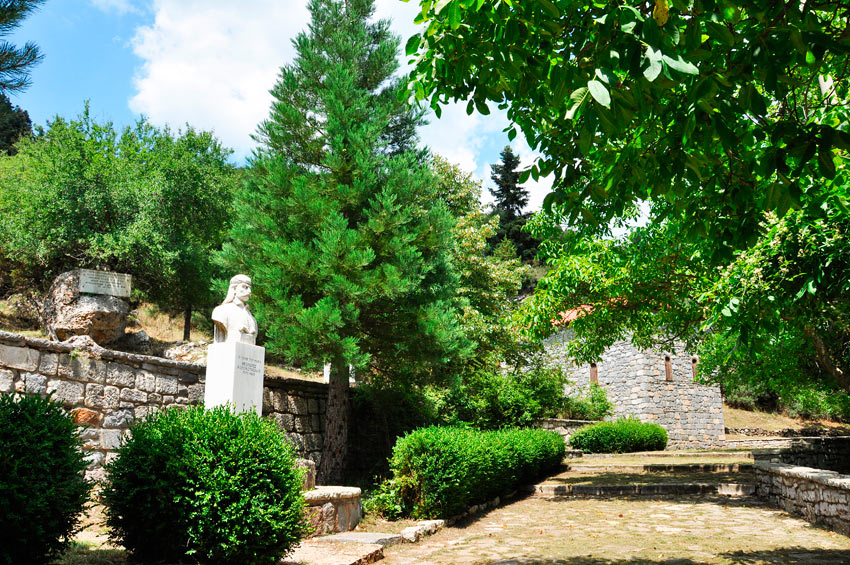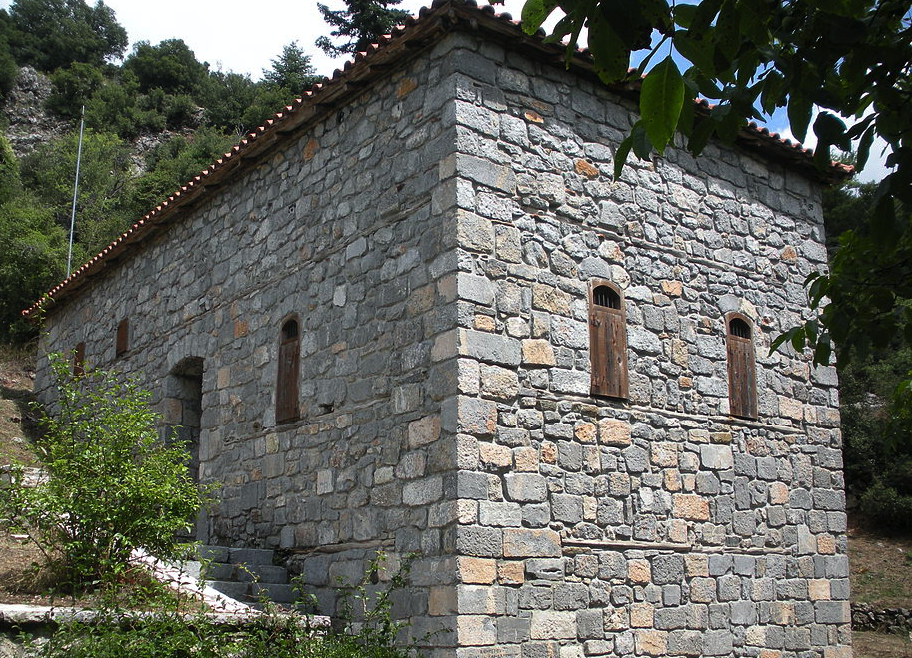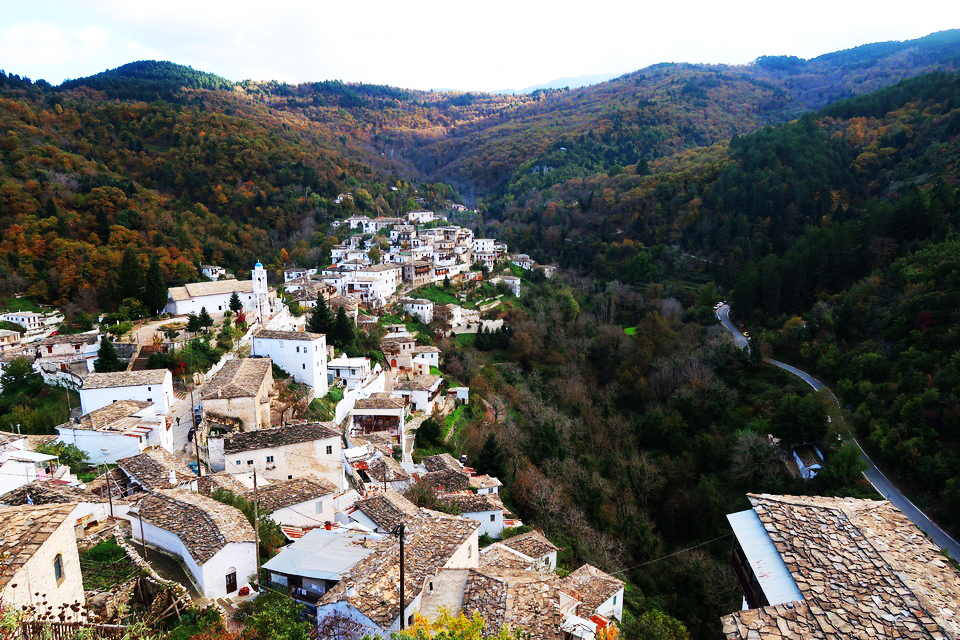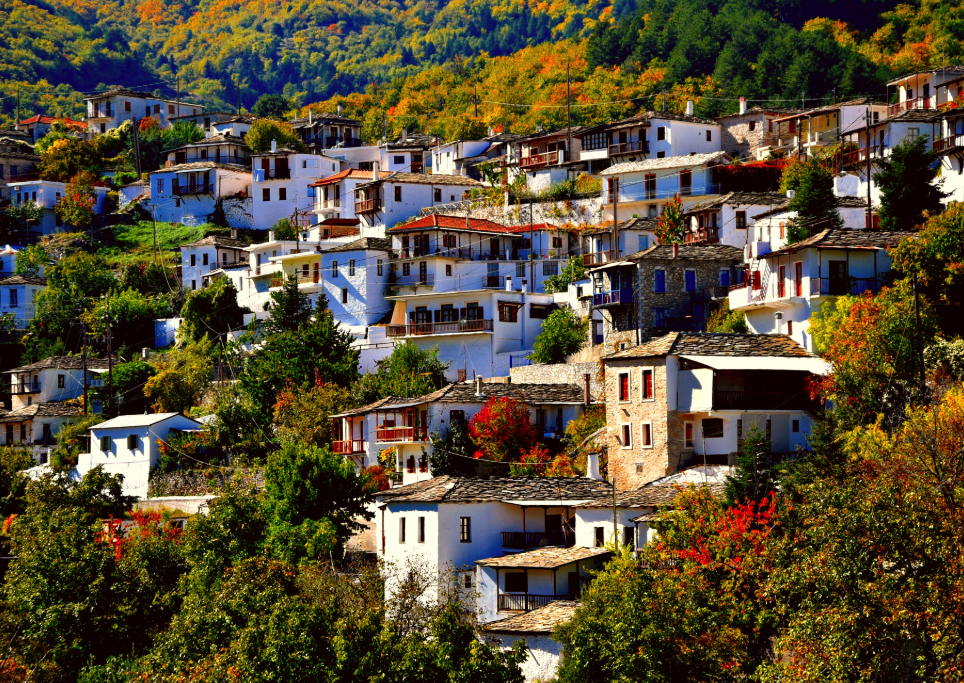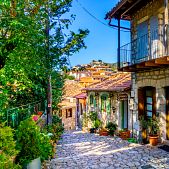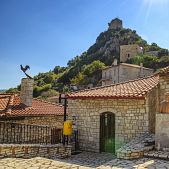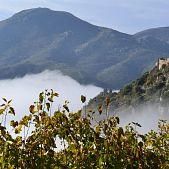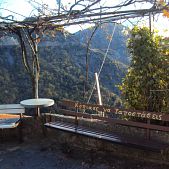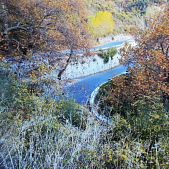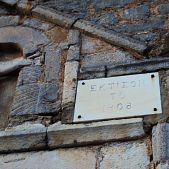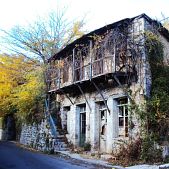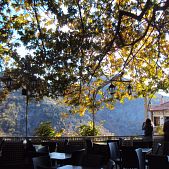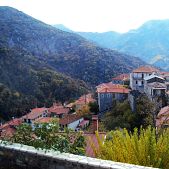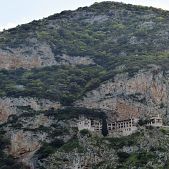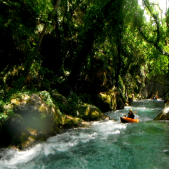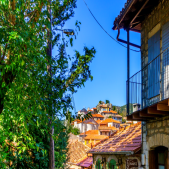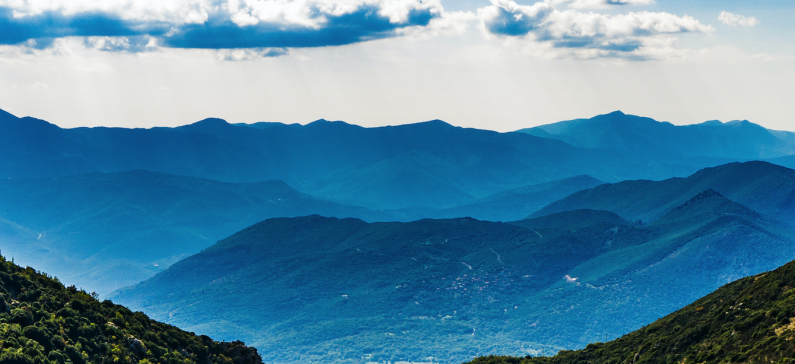
The enchanting “heart” of the Peloponnese
Mountainous Arcadia is a region of the central Peloponnese with a special beauty, enchanting landscapes, opportunities for activities in nature, historic stone-built villages and important monuments. A weekend or a few-day holiday -in every season of the year- to some of the places mentioned in this article will be an excellent opportunity to visit landscapes that hide treasures waiting to be discovered.
Mainalo mountain and the neighboring peaks of the mountains of Mountainous Arcadia rise up like walls that look like they are made of firs, cedars and any deep-green tall trees imaginable.
Among the numerous mountains and peaks of Mainalo, the peak of “Profitis Ilias” of Ostrakina stands out, which is the highest at an altitude of 1981 meters and is a powerful attraction for many climbers, but also for lovers of winter sports or mountain activities in general.
There, at an altitude of 1600 meters, there is a modern ski resort, which gathers crowds in the winter. It has four lifts, eight runs, a shelter and a guest house.
At the highest parts of Mountainous Arcadia are the alpine meadows and at the lower ones the rivers Lousios and Alfios. Lousios starts near Lagkadia and is poured into Alfios, near Karytaina, before it goes west to Ilia. There are bridges and watermills along its length, that also functioned as gunpowder-mills during the Revolution of 1821. The source of energy from the pre-industrial period is water and of course a source of life through time, to this day.
Dimitsana, Karytaina, Stemnitsa, Vytina, and Kastanitsa are the villages with the most famous names, built in the arms of Mainalo mountain. They have a rich history and around them there are plenty of walking routes and depending on the season, the possibility of rafting, rappel or even skiing, and many natural landscapes with magical beauty.
But there are also some quieter villages, such as Lagkadia, with less tourism and perhaps an even more pure image if someone is interested in spending a weekend not only in the middle of nature but also “back in time” in a sense. Each village in Mountainous Arcadia has a long and rich history and every neighborhood is a residential gem. In everyone, you will come across sights and endless charm and beauty.
Dimitsana is one of the most beautiful and best preserved villages of Arcadia, with its unique architecture, atmospheric guestrooms, impressive monasteries, the gorge of Lousios and Mainalo within walking distance, and has long been one of the most popular databases for different types such as romantic winter weekends, alternative excursions to Lousios and Alfios, as well as family excursions.
The architectural landscape of the traditional settlement, with the tall, stone-built tower houses, is unique. Amphitheatrically built on two opposite hills, above the Lousios river gorge, historic Dimitsana is a living museum of traditional architecture. From the altitude of 950 meters, the view of the plain of Megalopolis and Taygetos is stunning. Dimitsana’s story begins in the Homeric years when the small Arcadian town of Tefthis was in its place.
Someone can get “lost” in the narrow cobbled streets with the old mansions, the churches and the beautiful atmosphere, and while being there in the hills of Kastro and Agia Paraskevi, the memories of history class that was taught in school come to life. He can meet and see the house of Patriarch Gregory E, which today is the Church Museum, the house of the Old Patron Germanos, the great Library – the Dimitsana School, which gave thousands of books for the manufacture of cartridges, as Kolokotronis testifies in his memoirs.
Dimitsana is also well-known for the gunpowder that it offered during the Greek Revolution of 1821. Fourteen bar mills operated in the sources of Ai-Giannis, where the amazing Hydro-Kinisis Museum is today. On the other hand, there is the so-called Linos of the Kolokotronis family, the building where Kolokotronis’ brother was killed.
More and more young people settle each year in Dimitsana and deal with nature and tourism. In fact the young women of the village have also created a women’s association, through which they revive customs, publish a newspaper, organize competitions and various bazaars.
The Hydro-Kinisis Museum is quite active and many interesting things are organized on its premises such as movie screenings, exhibitions, workshops, children’s activities, and even a theater group, making it an active cell of the village.
Just below Dimitsana starts the gorge of Lousios, dominated by the Philosophos Monastery. The New Monastery of Philosopher for accuracy, because the old, ruined, from where it all began, is even lower, hanging in the gorge. Hidden School during the Ottoman domination, a clergy school later, which gave the sights to Nea Moni in the 17th century, where the Dimitsana School first operated. At the visitor’s feet is the spectacle of Lousios. Hiking in one of the most beautiful paths of the Peloponnese can normally begin, but this route is preferable to be upside down from the end of Lousios. Somehow, all roads lead to Karytaina.
Karytaina is 17 km from Stemnitsa, 23 km from Megalopolis and is also beautiful and historic village several “Greek” to be displayed on the back of the 5000 drachmas bill. It is not so lively and not very touristic, but gains the impression with its beautiful castle, built by the Franks in the 13th century, but it “acted” during both the Ottoman domination and the Revolution. Stone-built alleys, Byzantine churches and old stone houses accompany the walks in the village. Outside of it, nature takes over, and Alpheus, rolling on its feet, is crowned by the famous Pentecostal Bridge. Four kilometers outside of Karytaina, there is the bridge of Astiklos, from where the rafting routes start at Lousios and Alfios.
Even further, on the road to Stemnitsa and through the village of Elliniko, the road ends at Polygenis bridge. Here is the Ancient Gortyna, the ancient sanctuary of Asklepios. This location was chosen not by accident, of course. Even today, the strange energy of the landscape, with the sound of the river, and the mountains turning northward, forming the gorge of Lousios, is particularly noticeable. If you move south, it is marked by the Cyclopean walls, while on the other hand if you move north, it quickly enters the gorge.
Stemnitsa with headwaters in the ancient plane trees shade and a lively square full of cafes and restaurants, make up one of the most beautiful villages of Arcadia. Immense towers with arched lintels, stone paths that climb up under the arches of houses, reminding of the Byzantine “passages”, are lost in between walnut and cherry trees.
It is one of the most beautiful and historical villages of mountainous Arcadia and the Peloponnese, built in an amphitheatrical way on the western slopes of Mainalo, at the foot of Kleinitsa at an altitude of 1100 meters, while charms with its traditional architecture, its mansions, the beautiful Byzantine churches and its scenic cobblestone streets.
The natural location of this village between the fir-tree forest and the gorge of Lousios, its picturesqueness and its proximity to the sights of the wider region make it an ideal place for winter holidays and as a holiday base.
In Stemnitsa, life in the village flows calmly into nature, tourism, livestock and construction. The village is generally quite alive. There is the famous School of Goldsmiths, which still operates and brings a lot of young people to the village. From the post-Byzantine period, Stemnitsa made goldsmiths, renowned craftsmen who traveled to the world, spoke in passwords, the Metsiotis, and they were known, apart from their art, and their wits . It is said that they filled the Stemnitsa churches so that they might be cleansed. Now these are the reasons to walk in the cobblestone streets of the village. And the old houses also, with their small and wooden floors, wooden loggias and their beautiful doors.
The residents of Stemnitsa have a great tradition in hospitality and always welcome visitors with warmth, friendly mood and willingness to “walk” with them in the picturesque streets. The village is tranquil, within a unique natural landscape and is the ideal destination for the visitor of Mountainous Arcadia, who wants to live away from busy urban centers.
At the height of Stemnitsa is the Monastery of Prodromos. A believer or not, it’s one of the most breathtaking images someone can see. Hidden, literally, in the canyon, hooked on the wild rocks, inspires an awe and also admiration for the monks who can reside here. From the wooden balconies of the Monastery of Prodromos, which literally hangs over the Lousios canyon from the 16th century, the view can only be characterized as divine. All the beauty of the wild Peloponnese is here, at the feet of the visitors.
In a very close distance from the Monastery of Prodromos, an amazing path that goes down to the river of Lousios and ascends to the opposite slope of the gorge will bring the visitor to the New Monastery of Philosophy, built in 1691. Next to it will be the katholikon of the old monastery of the 10th century and then will enter Nea Moni to admire the wall paintings of 1693, which is one of the area’s greatest attractions.
Ancient Gortyna is the most important monument in Mountainous Arcadia from the ancient past of the valley of Lousios and at the same time a very energetic place. The ruins of the city that flourished in the classical and Hellenistic times are at the exit of the gorge. Excavations revealed the two citadels, two Asklepios, bathing facilities, temples and thermal spas.
Vytina has described as the “jewel of Mainalo” and indeed, the visitor will discover a peaceful and friendly village that will welcome him in his arms, offering calmness and relaxation.
The old stone-built houses have a special architectural figure, dominated by the famous black marble of the area. The settlement spreads on a spacious hillside that embraces all forested mountains in a location full of pine, fir and chestnut trees. Through a stroll through its beautiful narrow streets and its tree-lined streets, you will see the beauties that you find in the Greek countryside.
There is a folklore museum in Vytina with precious objects from the heavy history of the place. Still, the village taverns, gathered next to each other, offer cocktails, wild boar, chortopites and, of course, the specialties of the region, the pork tenderloin.
The love of the “Vytinians” for their village is diffused on every street, every house, every corner. Mana-land of many important people, Vitina gave Greece, the historian Konstantinos Paparrigopoulos, the law-maker Vasilis Economides and the explorer, Panagiotis Potagos.
Libovisi, another historical village of Arcadia, is the birthplace of the proud Kolokotronis family and is about 15 km from Vytina. Surprised, literally, in the dense fir forests, the restored house of the Kolokotronis family, narrates “silently” its great history. Today it is uninhabited, but as a place of pilgrimage it attracts a multitude of visitors almost every day.
There is a source with plenty of water and plenty of space. The Municipality of Falanthos, with absolute respect for the environment and local architecture, has built a refreshment shop, which has been operating since June 2006, by offering local products such as honey, tea, traditional sweets and refreshments.
The main route to Libovisi, starting from Tripoli, is via the Municipality of Falanthos. After the Panarcadian hospital you follow the road to the villages, Tselepakos, Chrysovitsi, Stemnitsa. One kilometer after Chrysovitsi (23 km from Tripoli) turn right. You pass from the uninhabited Arkoudorema and you reach Livovasi, after 7 km. The road is asphalted and in good condition. Particular attention is needed in the frosty winter months.
Kastanitsa is a beautiful mountain village built on the slopes of Mount Parnon at an altitude of 850m, on an elongated hill on which stands the castle hill, with spectacular views to the village. It is considered one of the most picturesque traditional settlements not only of Mountainous Arcadia but also of the entire Peloponnese.
The element of Kastanitsa that instantly attracts the attention of the visitor is the large stone-built white houses with their gray roofs made of the slate of Malevos, which in some places are like hanging from the rocks of the hill and down to the green ravine, while some others are hiding behind the leaves of hundreds of chestnut trees on the slopes of the road leading to the central square of the village.
Kastanitsa owes its white color to the production of lime, which was previously very famous. Indeed, there was a period during which functioned thirty to forty lime that baked continuously lime and today operate just three or four of them.
But if its color is owed to lime, its name comes naturally from the chestnuts and the neighboring countless chestnut trees. Previously, the chestnut harvest reached 500 tons, and even today, the chestnut of the area is renowned and is its main productive product, with nearly 4,000 acres of cultivated land.
«Et in Arcadia ego». Ancient temples and old monasteries sanctify in a magical way the whole place. The river Lousios sparkles in its gorge. Stunning historic stone-built villages with traditional architecture, excellent family taverns, well-maintained hostels and old mansions, densified mountains, imposing canyons, rushing water, incredible trails and historical monasteries. Mountainous Arcadia is a special, almost “mythical” destination in the heart of the Peloponnese. You can enjoy it with your company or family even during a weekend.
Of course, if time allows it, it’s worthwhile to search and visit in the outskirts of Dimitsana the Philosophos Monastery and those of Vitina, the historic Monastery of Kernitsa, two of the oldest monasteries in the wider region. Also, if someone is a fan of extreme sports, he will take the opportunity to do rafting or canyoning in Lousios. Last but not least, it’s worth visiting the open-air Hydro-Kinisis Museum of watermills and gunpowder-mills in Dimitsana where history and tradition come alive in front of the eyes of the visitors.
The Athens-Corinth-Tripoli highway has almost nullified distances, and so within a very short time, someone can easily travel from the Greek capital to the idyllic Mountainous Arcadia. This beautiful land, with the incredible wealth of colors and landscapes, is yet another well-hidden treasure of the Greek countryside. If for some, vacation time is somewhat limited, it is not the end of the world, since the next Friday, the next long weekend or the next holidays are relatively close, and Mountainous Arcadia always ready to welcome you.

